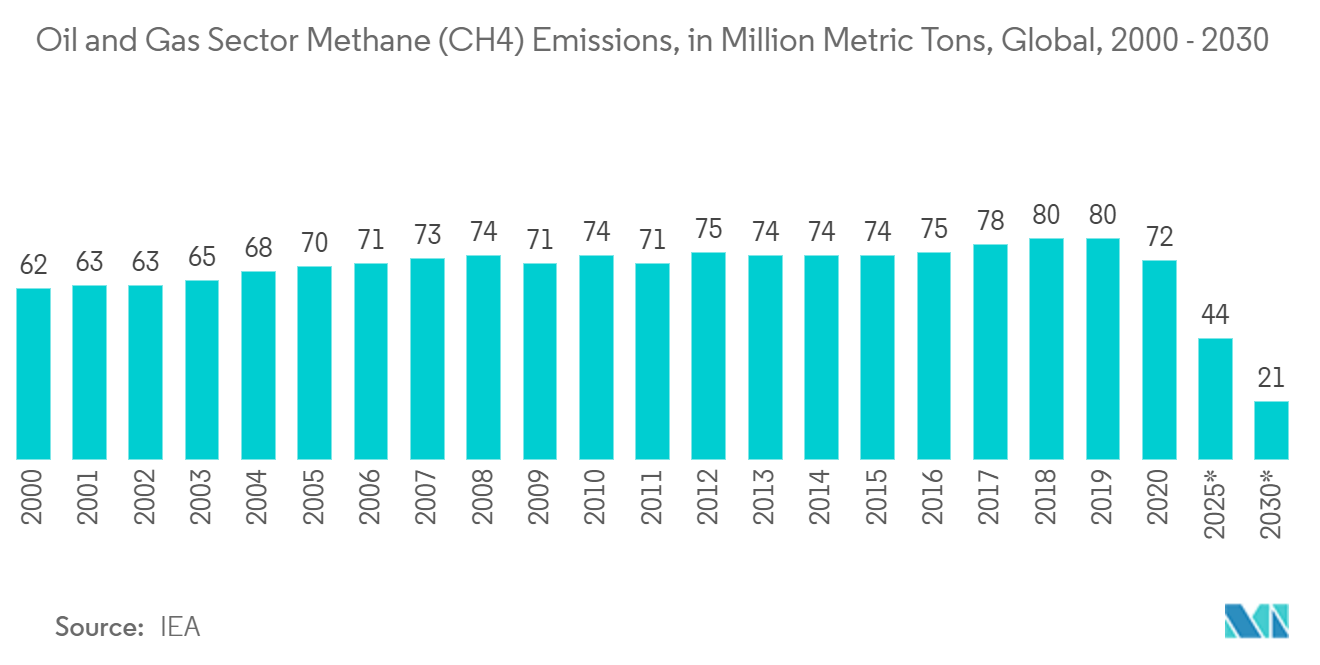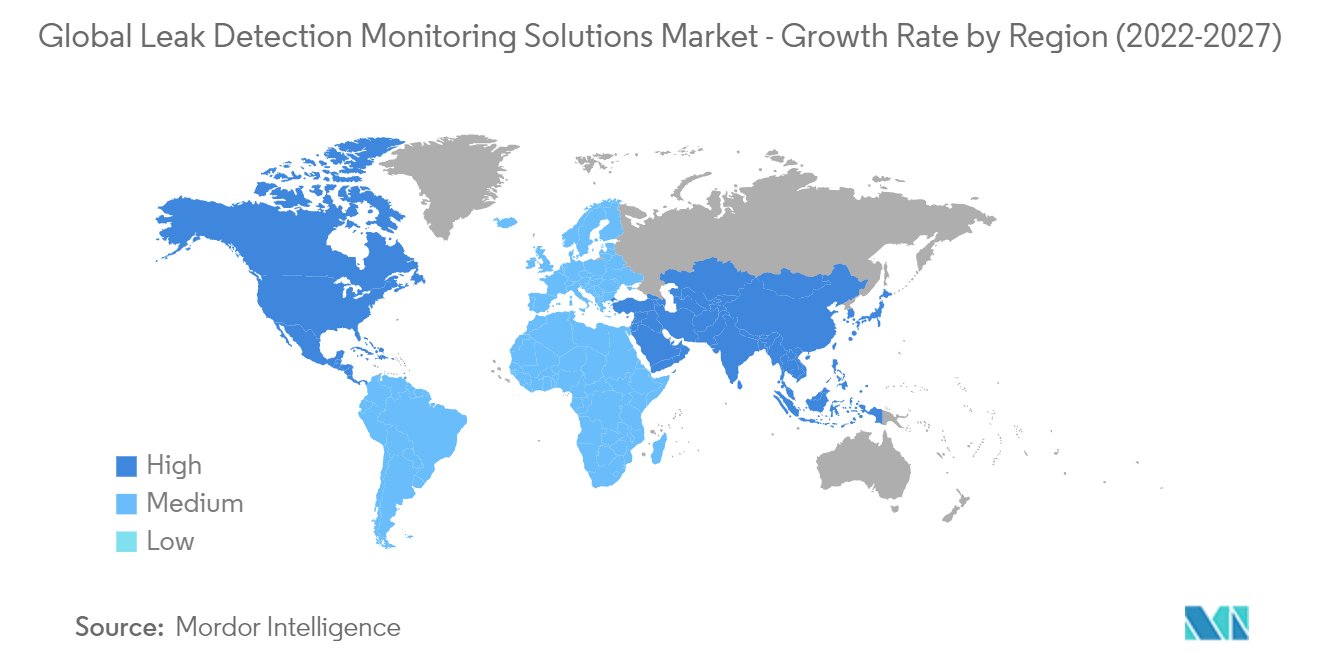Market Trends of Global Leak Detection Solutions Industry
This section covers the major market trends shaping the Leak Detection Solutions Market according to our research experts:
Oil & Gas is Expected to Drive the Market Growth
Many gas emission monitoring firms utilize machine learning and Artificial Intelligence (AI) to identify leaks in infrastructure more efficiently. A machine learning algorithm detects leaks and emission risks on the ground through satellite pictures. Machine learning data enables operators to recognize trends and patterns across time, allowing them to make data-driven choices. As a result, many oil and gas firms are attempting to replace the old leak detection solutions with technologically advanced ones. Various venture capital firms are investing in startups that provide AI-based leak detection and monitoring systems, opening new market prospects.
For Instance, In November 2021, SCF Ventures, a venture capital firm focusing on investing in energy services firms, announced its investment in Qube Technologies provides customers with internet-of-things ("IoT") devices to continuously monitor a host of gases, including methane, carbon dioxide, and hydrogen sulfide. Oil and gas operators can use Qube Technologies to provide continuous emission and leak monitoring equipment to better identify, decrease, and quantify methane emissions. The funding will aid Qube Technologies implementation of continuous monitoring systems, allowing the industry to reduce emissions even further.
According to the International Energy Agency, reducing gas emissions such as methane from hydrocarbon operations is one of the most cost-effective and impactful methods to help reach global climate and environmental goals. Various technologies are used for leak detection solutions, such as ultrasonic, pressure analysis, thermal Imaging, fiber optic, Laser absorption, LiDAR, vapor sensing, E- RTTM, etc.
Energy companies are establishing goals to manage methane emissions effectively to help address global climate change. For instance, in April 2021, Honeywell launched its gas cloud imaging (GCI) system in Europe to provide automated and continuous monitoring for leaks of hazardous and polluting gases such as methane at oil and gas, chemical industries, and power generation facilities across the continent.
In November 2021, Teledyne FLIR launched Si124, an ultrasonic leak detection camera. Air leak detection and identifying partial discharge from high-voltage systems are two of the most common applications for acoustic imaging. The Si124-LD is specific for compressed air leak detection. The FLIR Si124 can detect leaks and partial discharge up to 10 times quicker than standard methods using sound imaging from 124 built-in microphones.

North America is Expected to Register the Fastest Growth
North America is the fastest-growing leak detection solutions market. Due to rapid industrialization growth in the oil and gas industries, the use of leak detection solutions market has a high demand, and key players in North America, such as Honeywell International Inc, and Schneider Electric S.E., are also launching new products in Leak detection solution.
The key players in the North American region are launching different products to detect oil, gas, and chemical leaks. For instance, In October 2021, Honeywell announced the release of two Bluetooth-connected gas detectors that can continuously monitor dangerous gases even in fog, rain, snow, and other inclement weather and provide facilities to keep the oil and gas petrochemicals, chemicals, and other workers and industrial sites safe.
Strict government laws and norms can be credited to the region's progress. On hazardous liquid pipelines, the U.S. Department of Transportation's Pipeline and Hazardous Materials Safety Administration mandates the installation of a leak detection system. The United States government's backing for the oil and gas industry also propels the country's industrial development. As the oil and gas sector expands in the United States, the demand for leak detection solution increases. Furthermore, government subsidies to the oil and gas fuel regional market expansion.
According to International Energy Agency(IEA), LNG contracting activity shrank by almost 30% year-on-year (y-o-y) in 2020, while activity during 2021 has potential for recovery. Final investment decisions (FIDs) were also down from 2019 record high, with one North American project sanctioned in 2020, plus Qatar's major expansion plan confirmed in early 2021. These new investments, added to the wave of FIDs taken before 2020, should therefore prove sufficient to satisfy additional LNG demand in the coming years. which is a driving factor for the market players in North America.
With the discovery of several oil and gas reserves worldwide in recent years, several oil and gas exploration projects were initiated to fulfill the global demand for oil and gas. It has led to the increased requirement for monitoring oil and gas facilities, leading to the demand for leak detection systems. For Instance, In February 2022, B.P. Plc announced the startup of the Herschel Expansion project in the Gulf of Mexico. Herschel is the first of four major projects to be delivered globally in 2022. Phase 1 of the project comprises developing a new subsea production system. The first well is expected to increase platform annual gross production by an estimated 10,600 barrels of oil equivalent daily at its peak.


